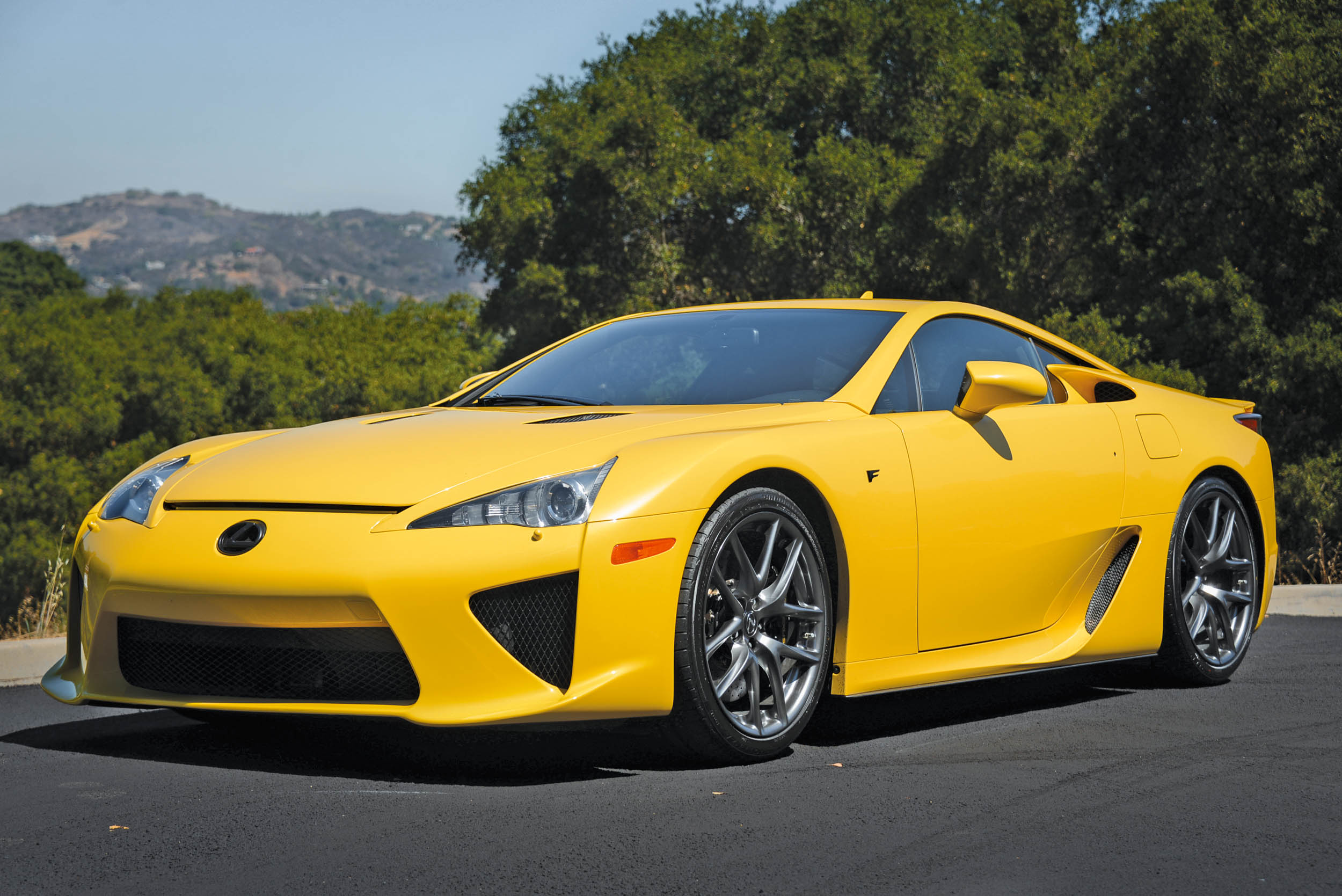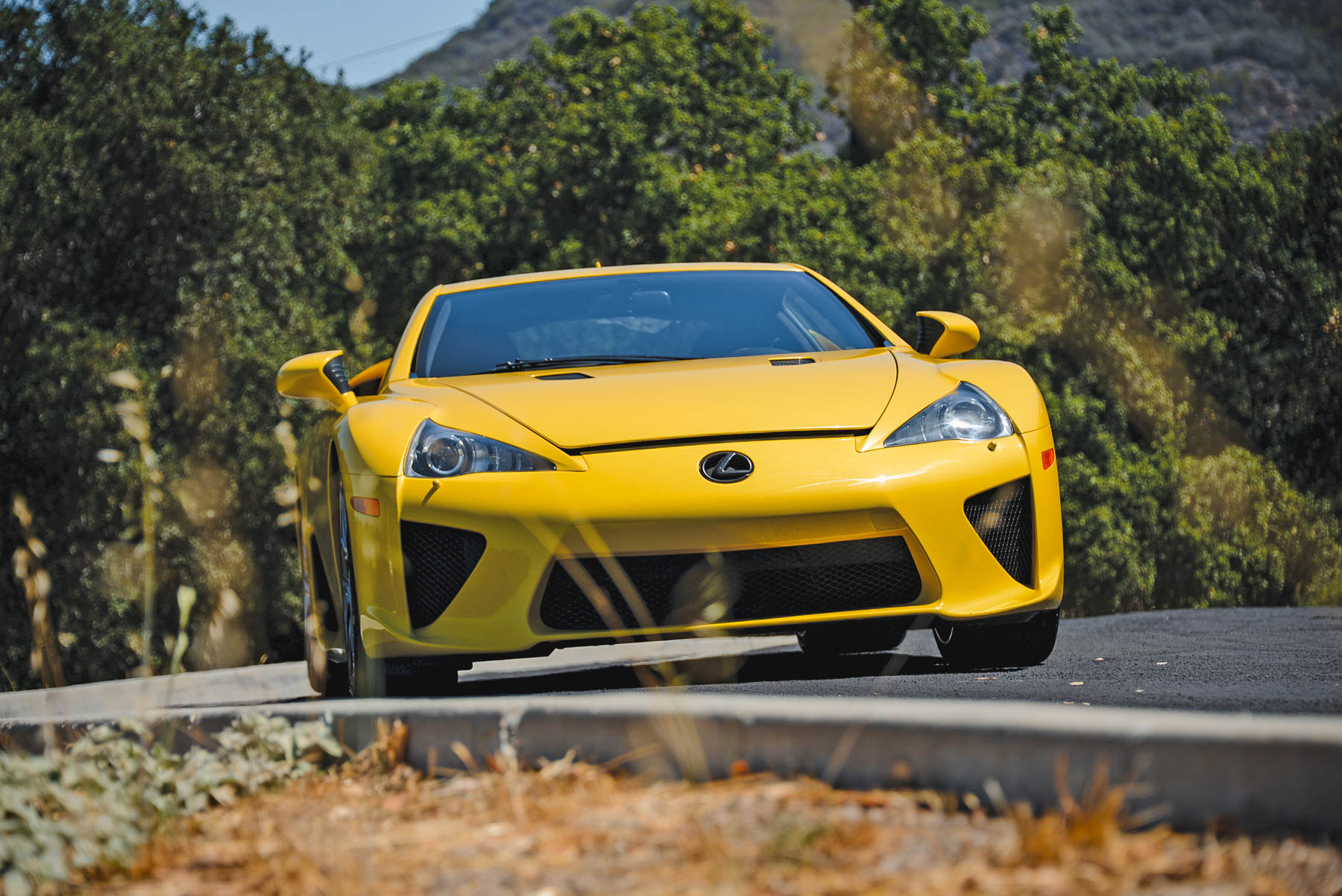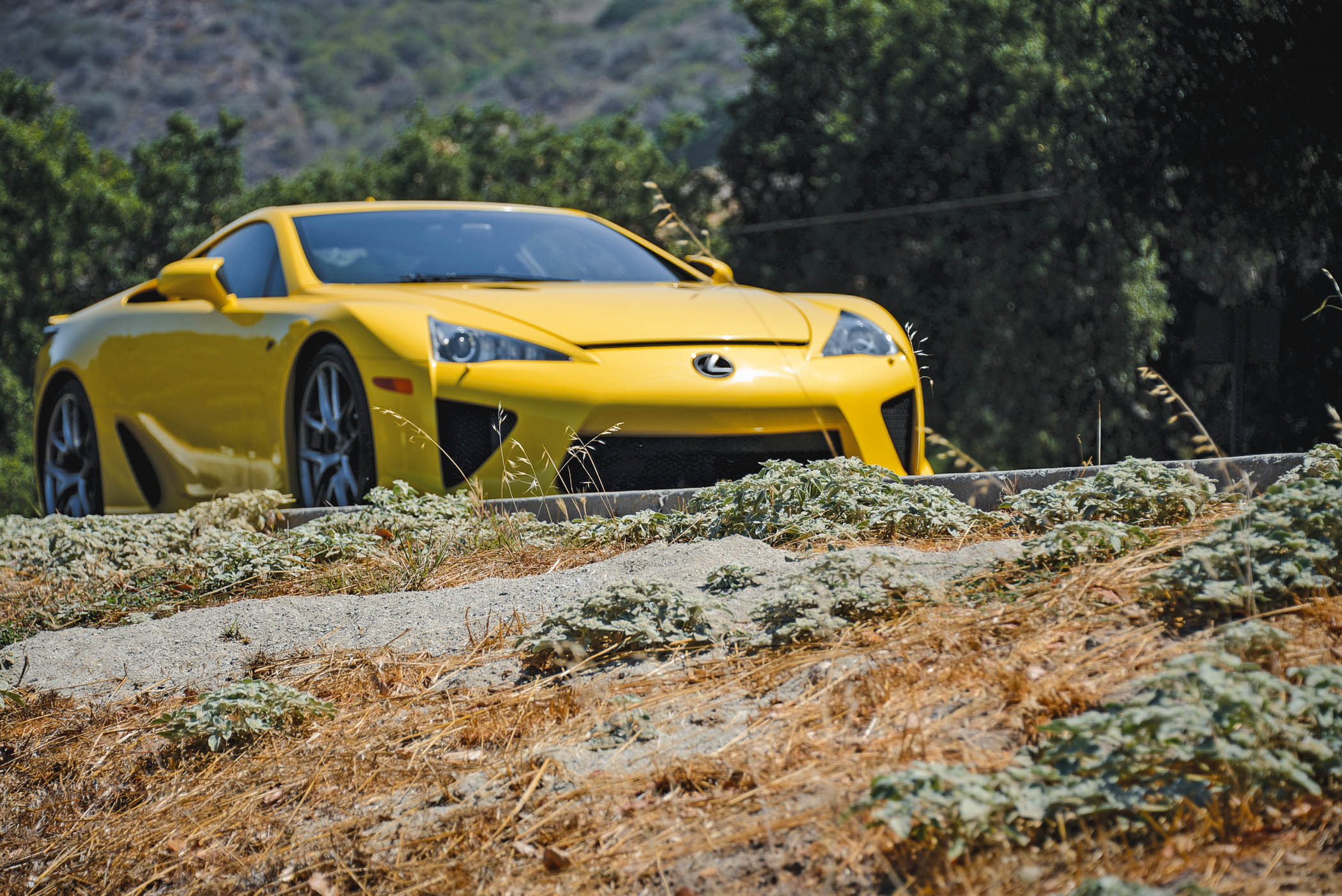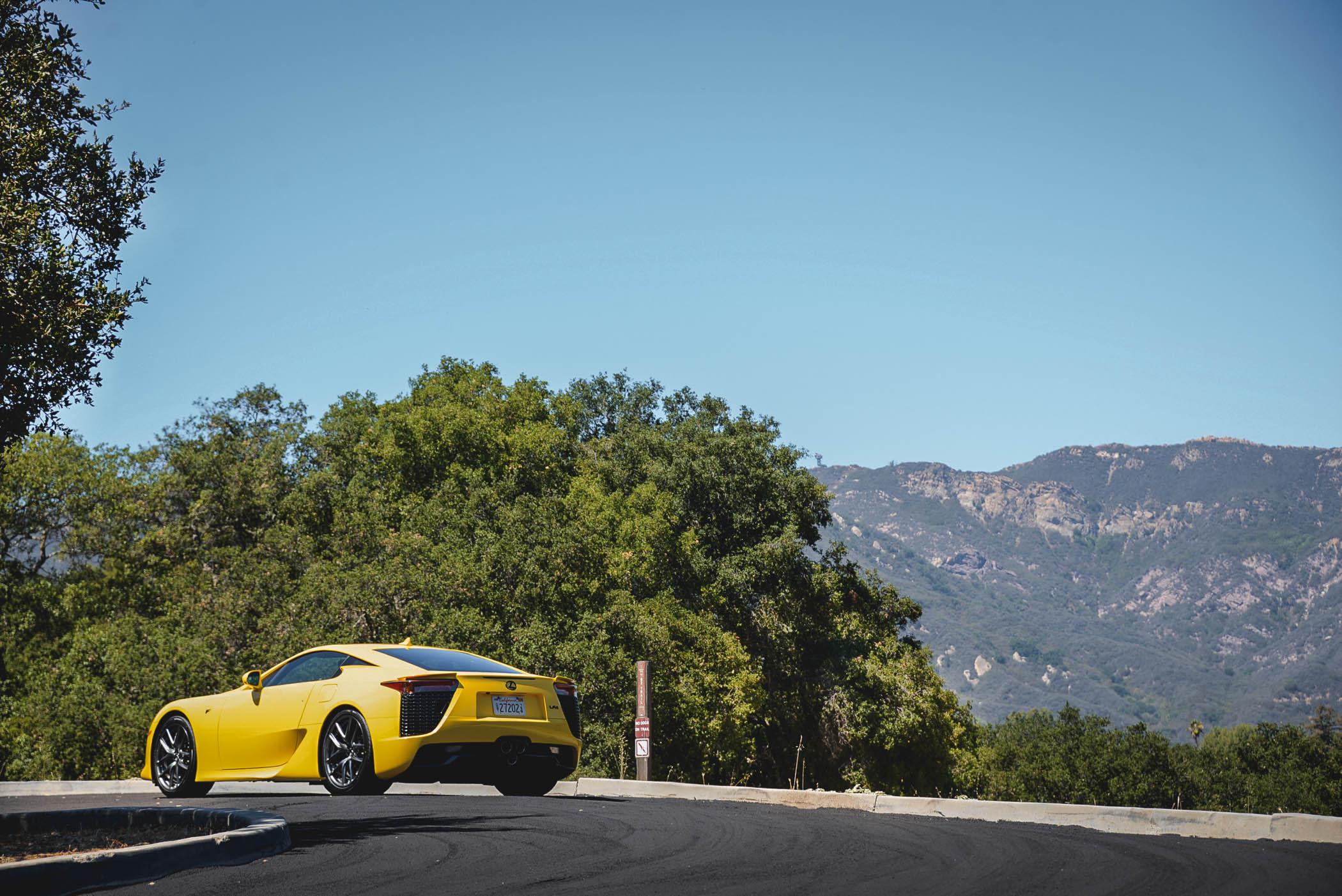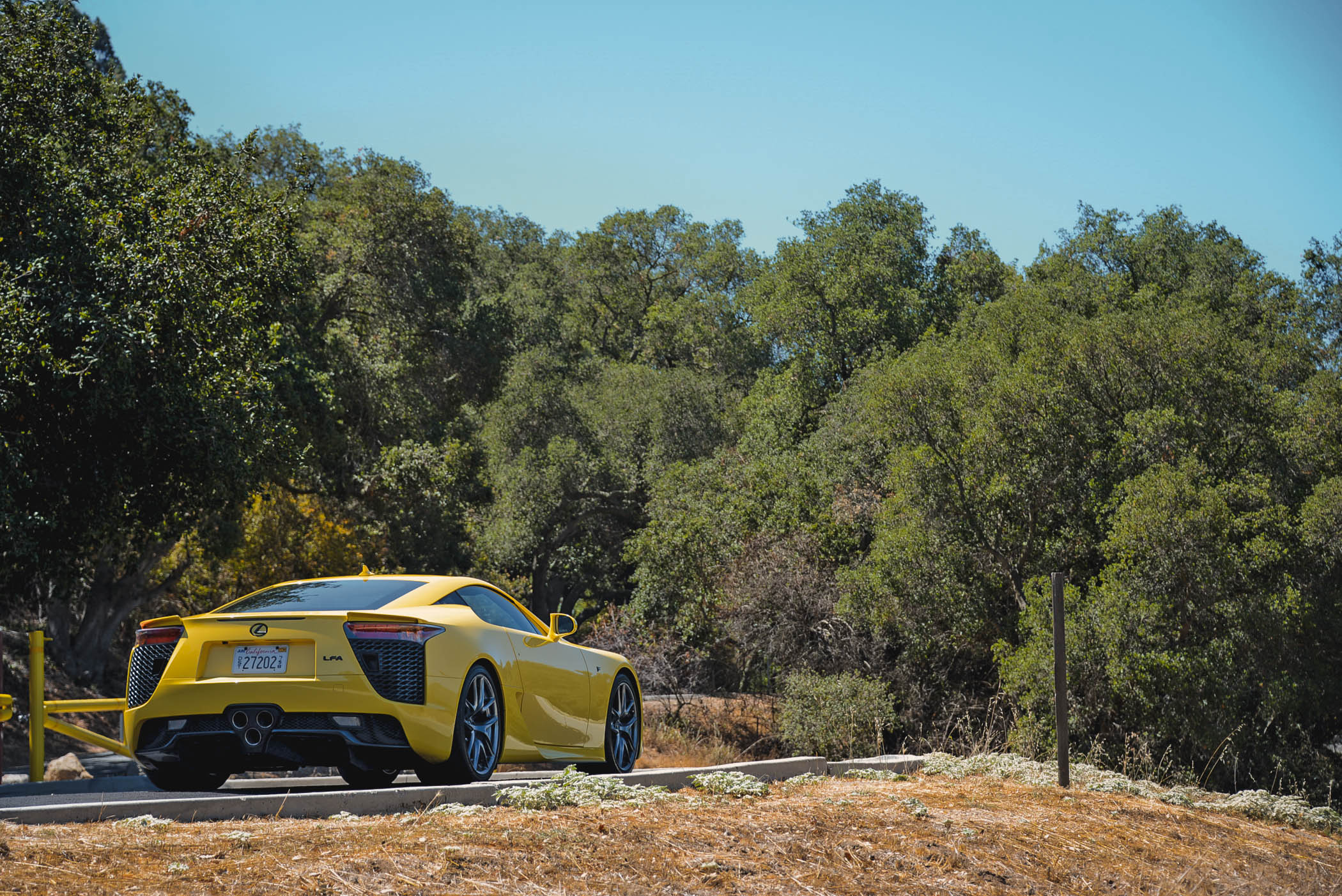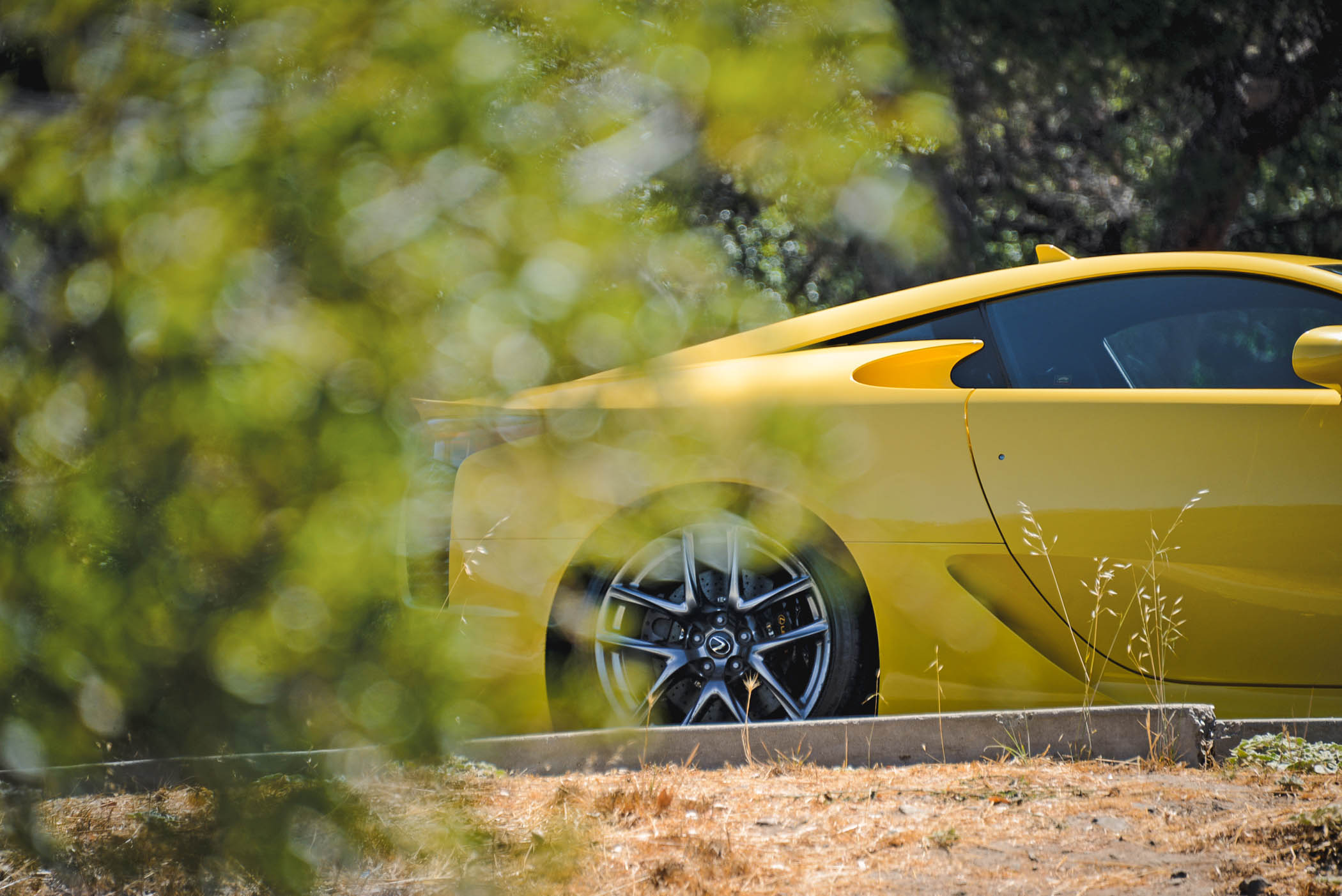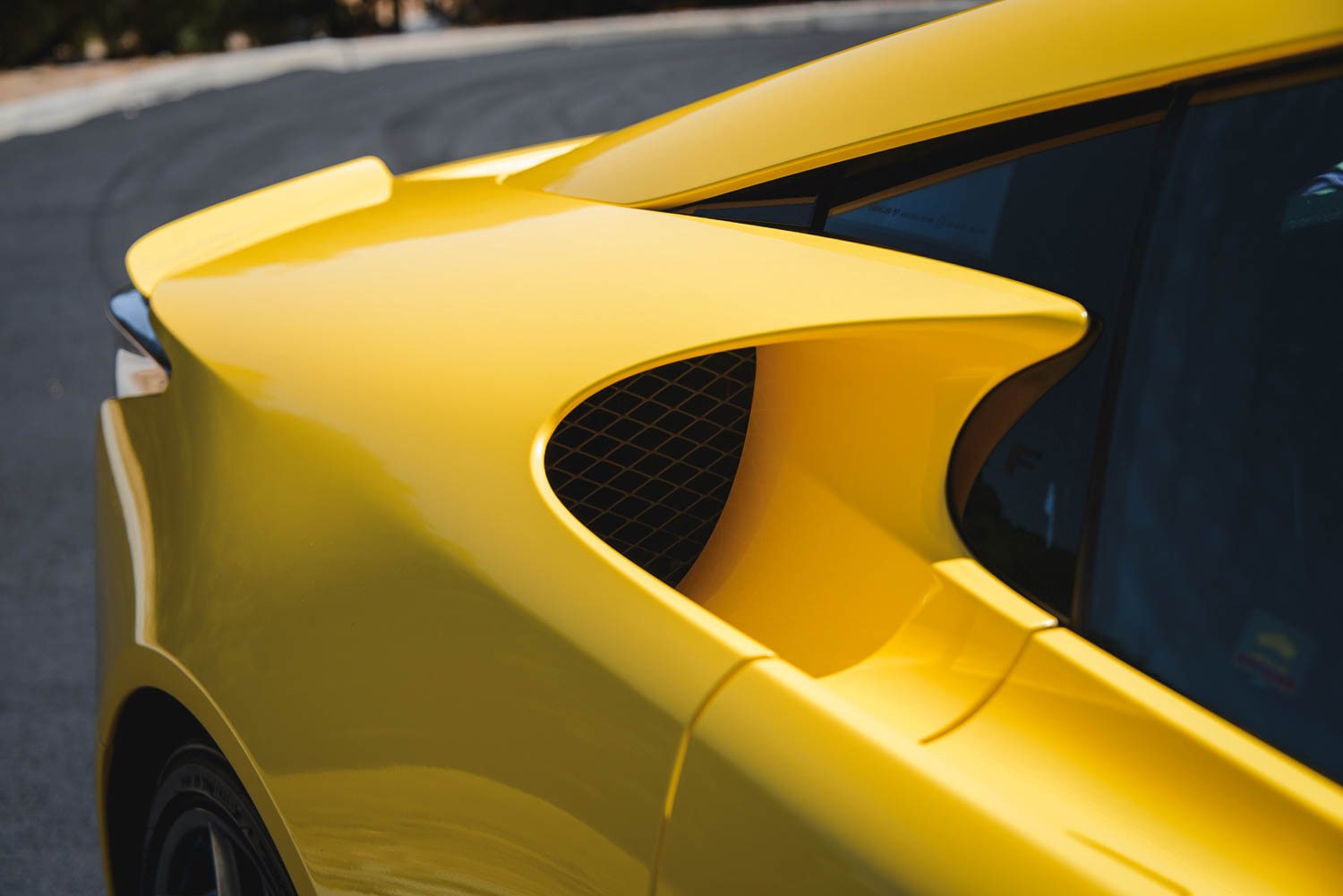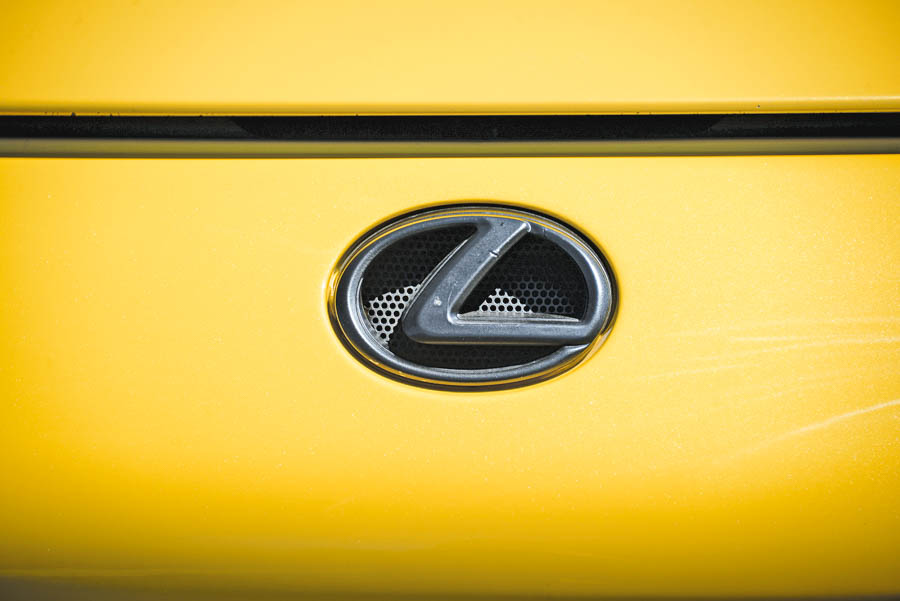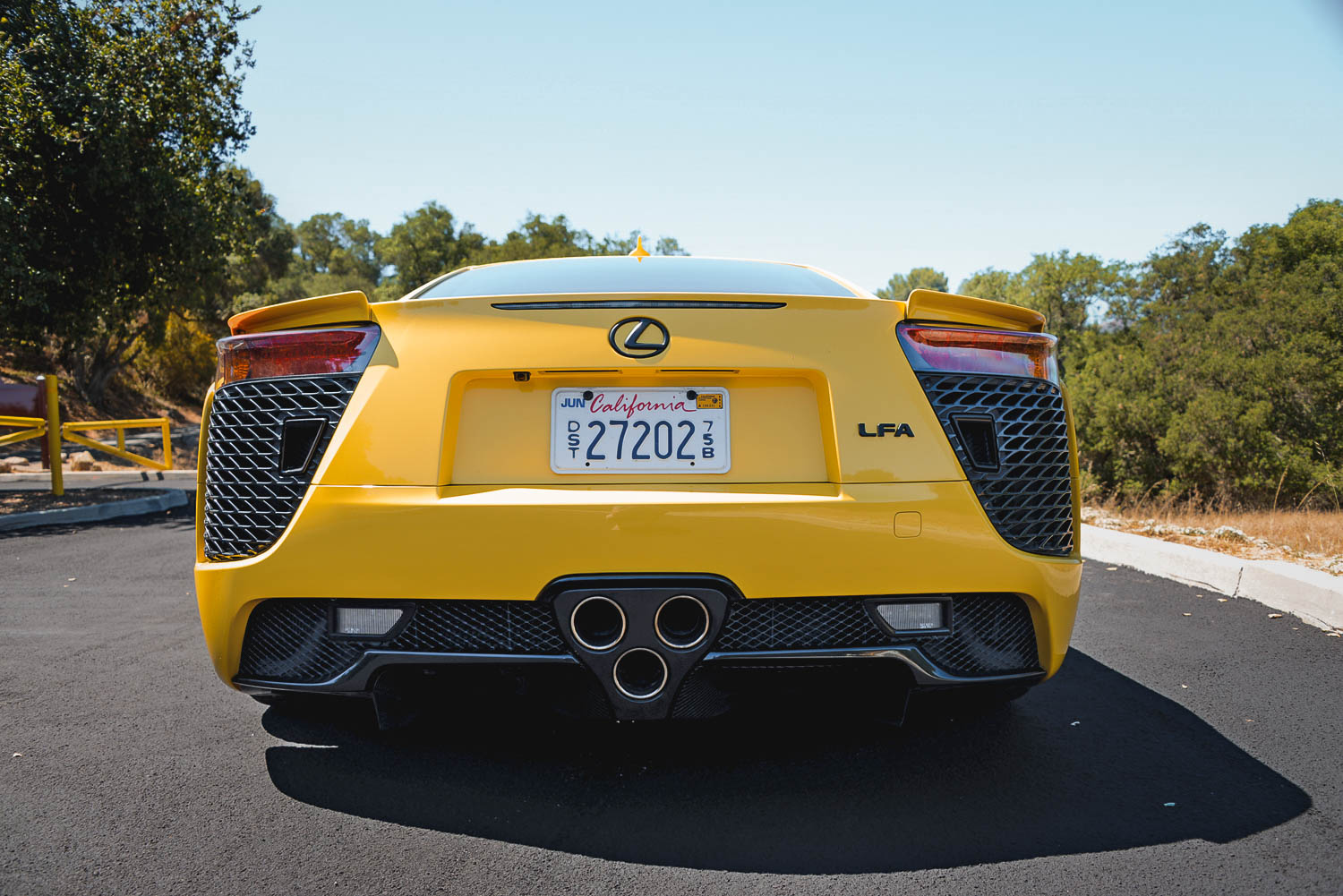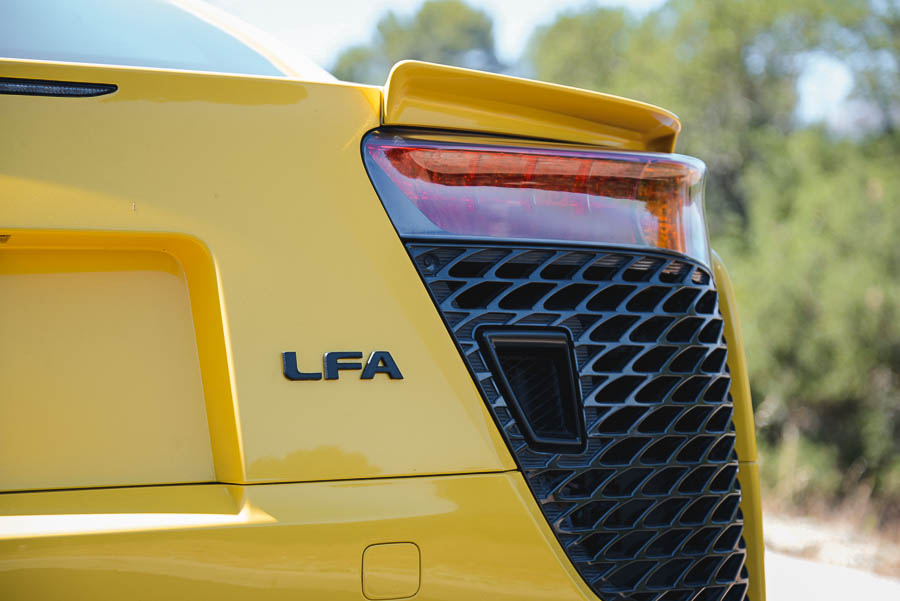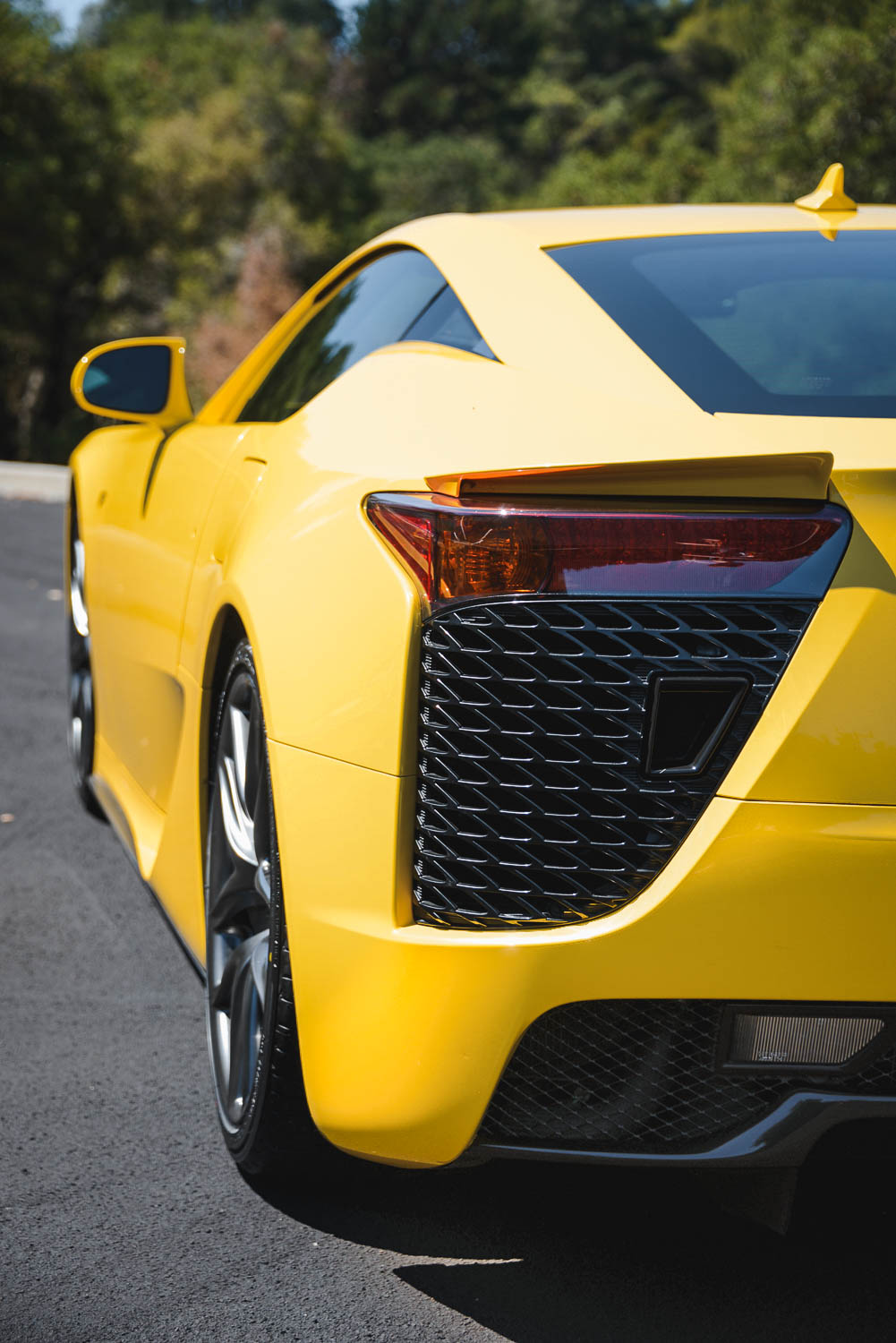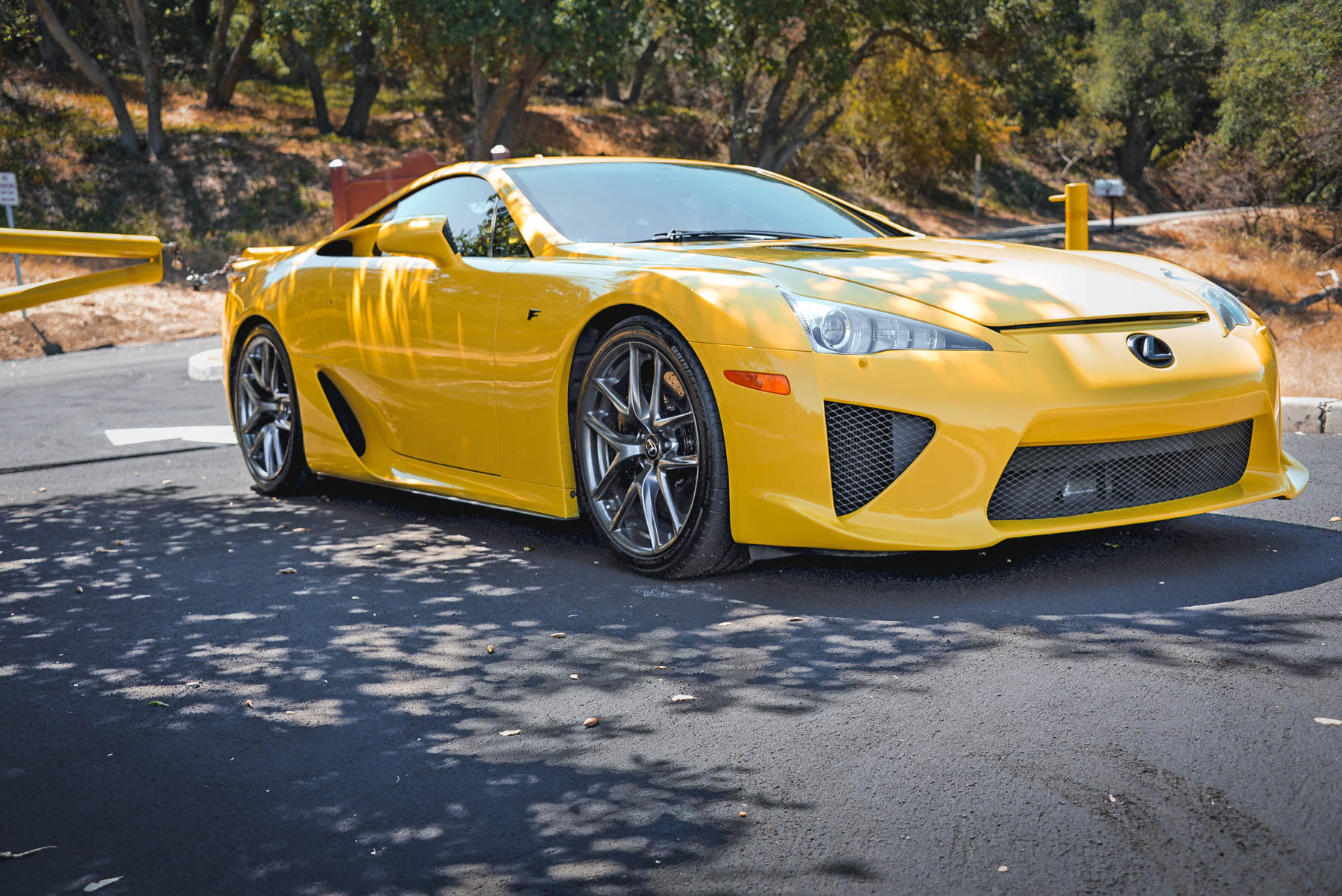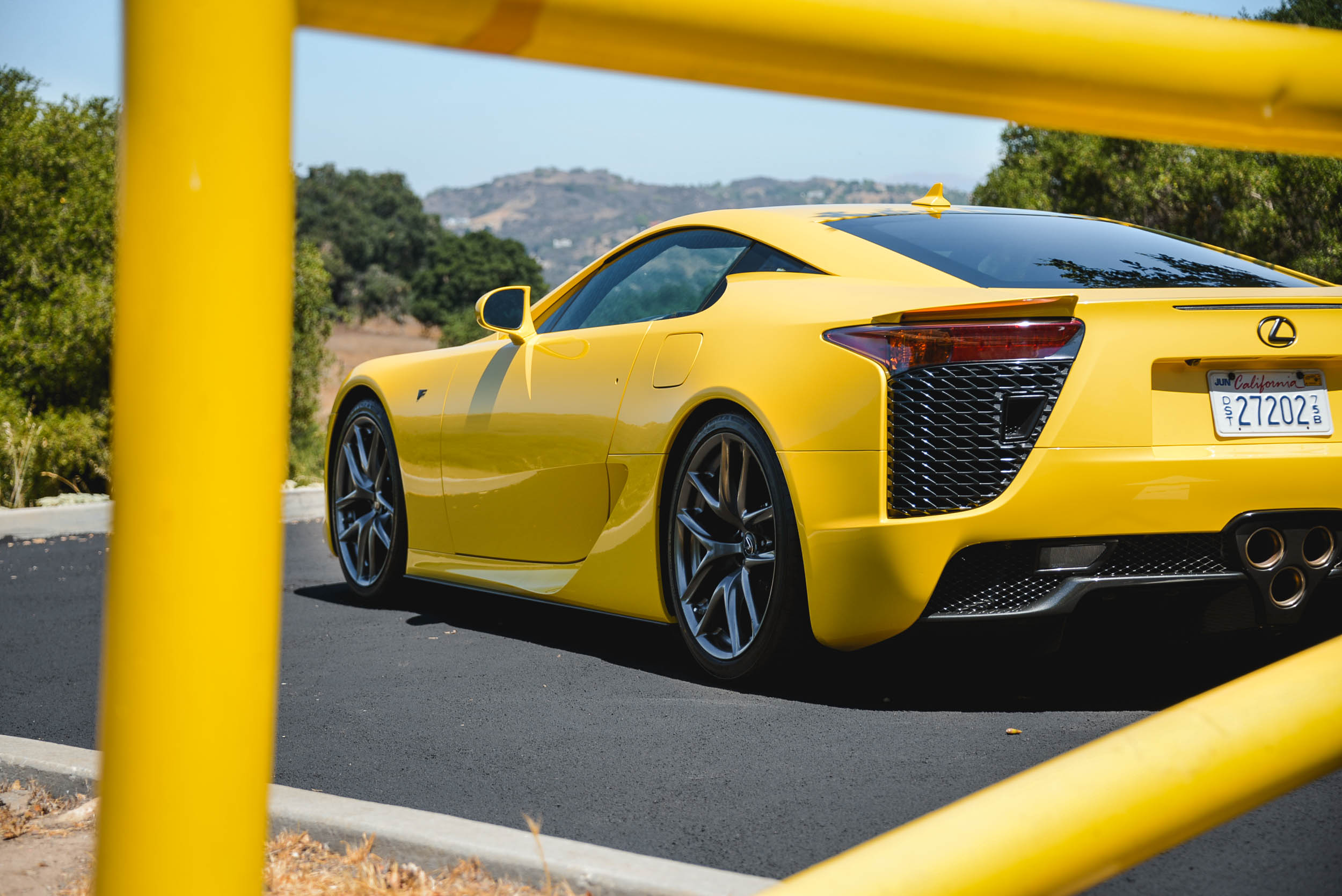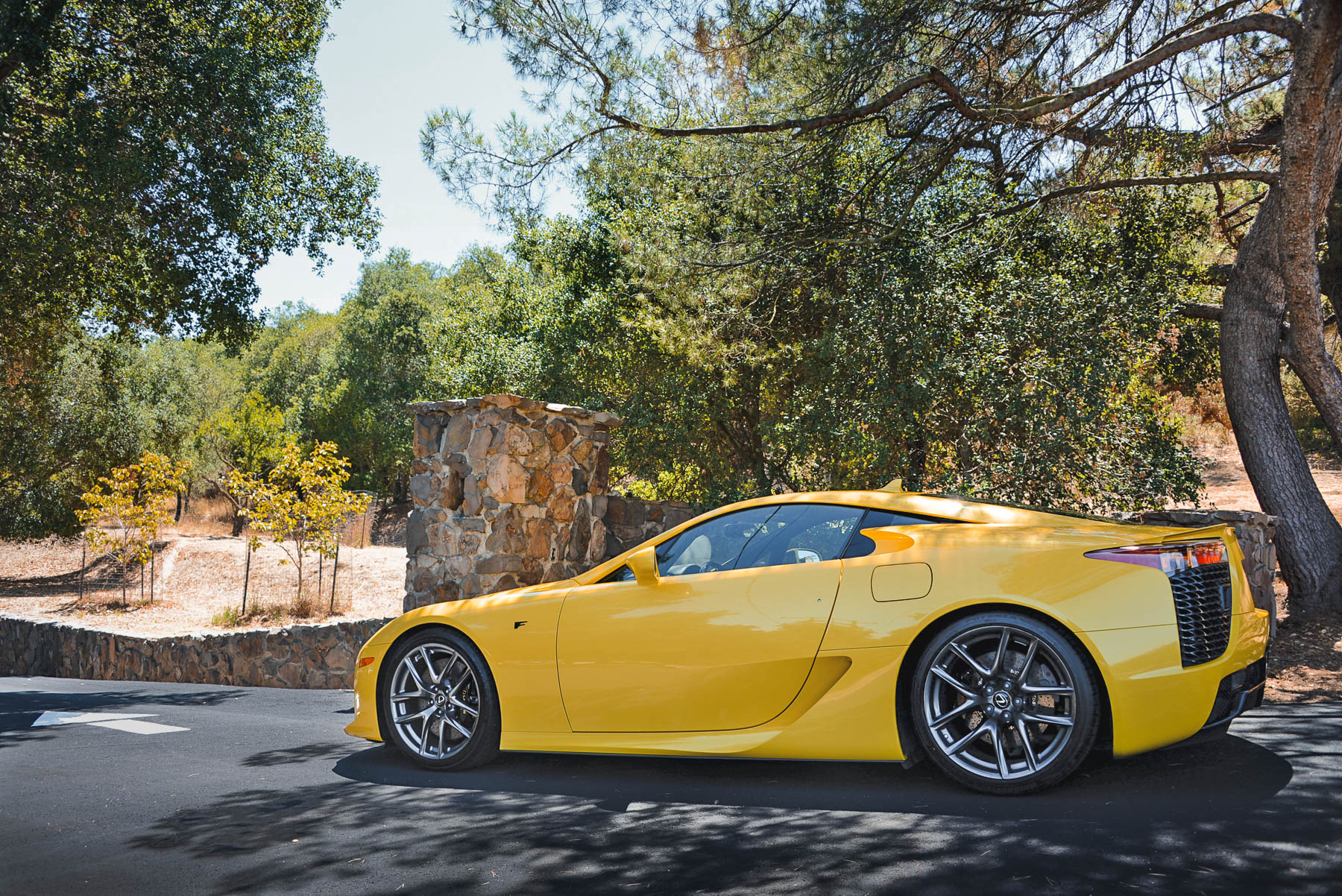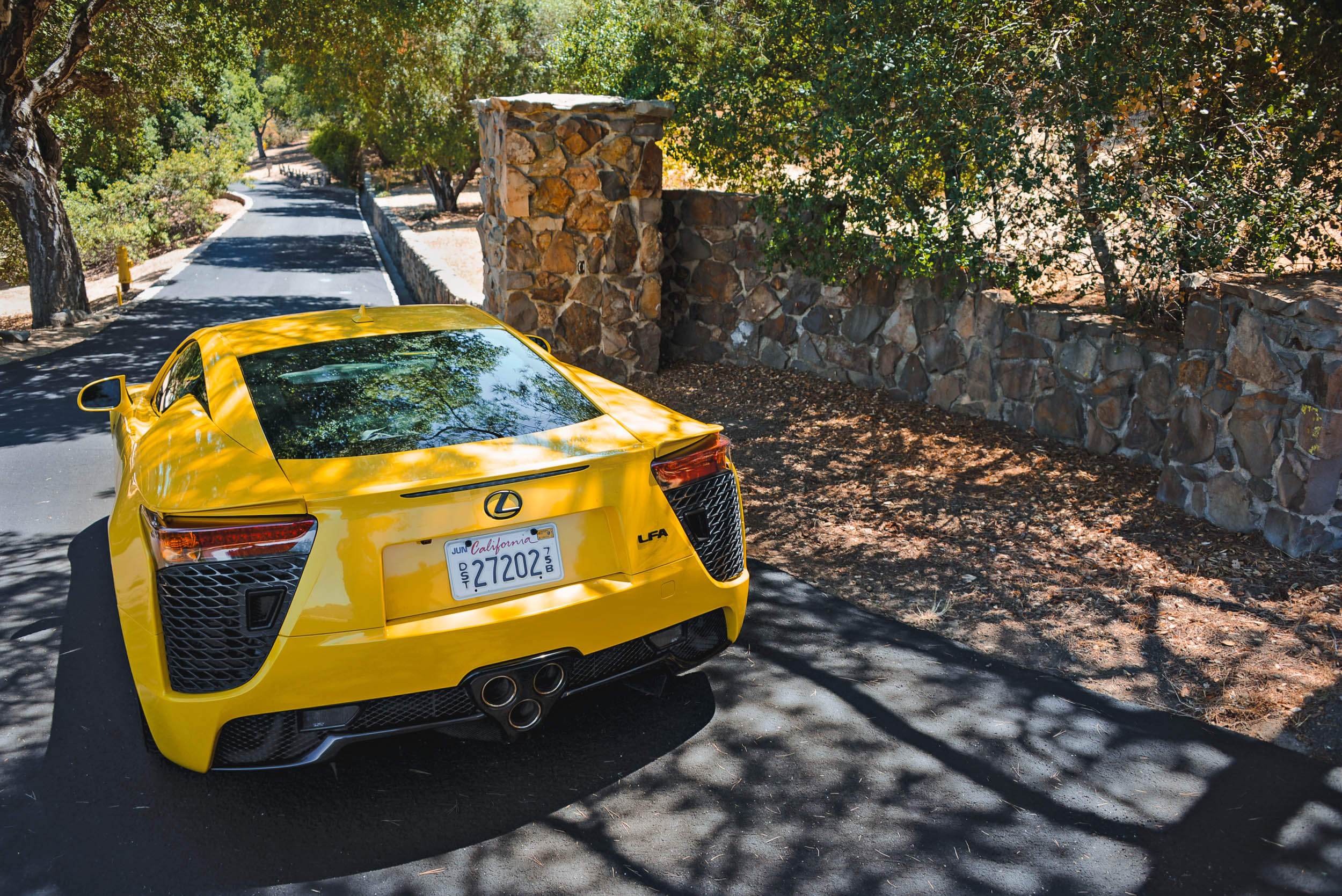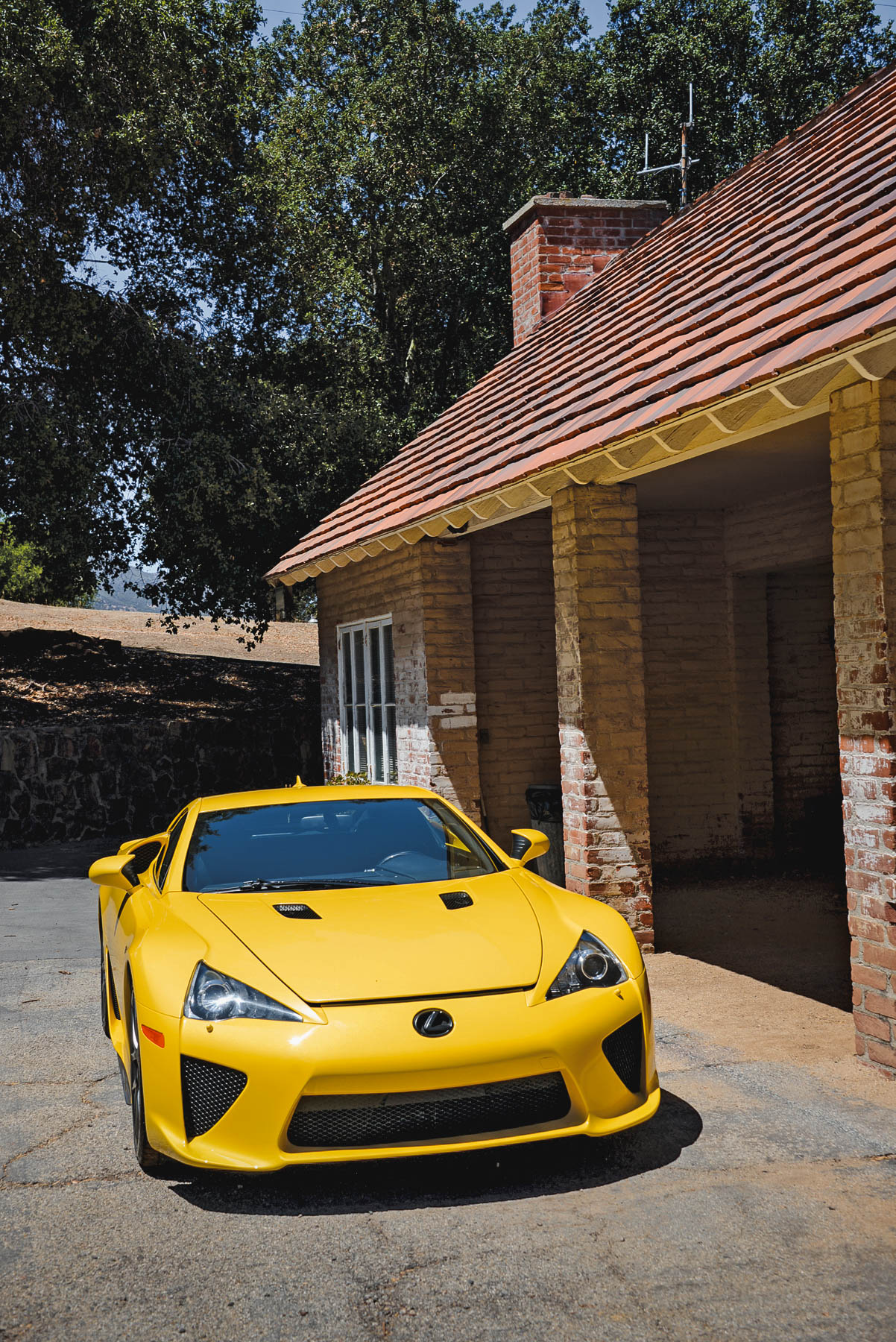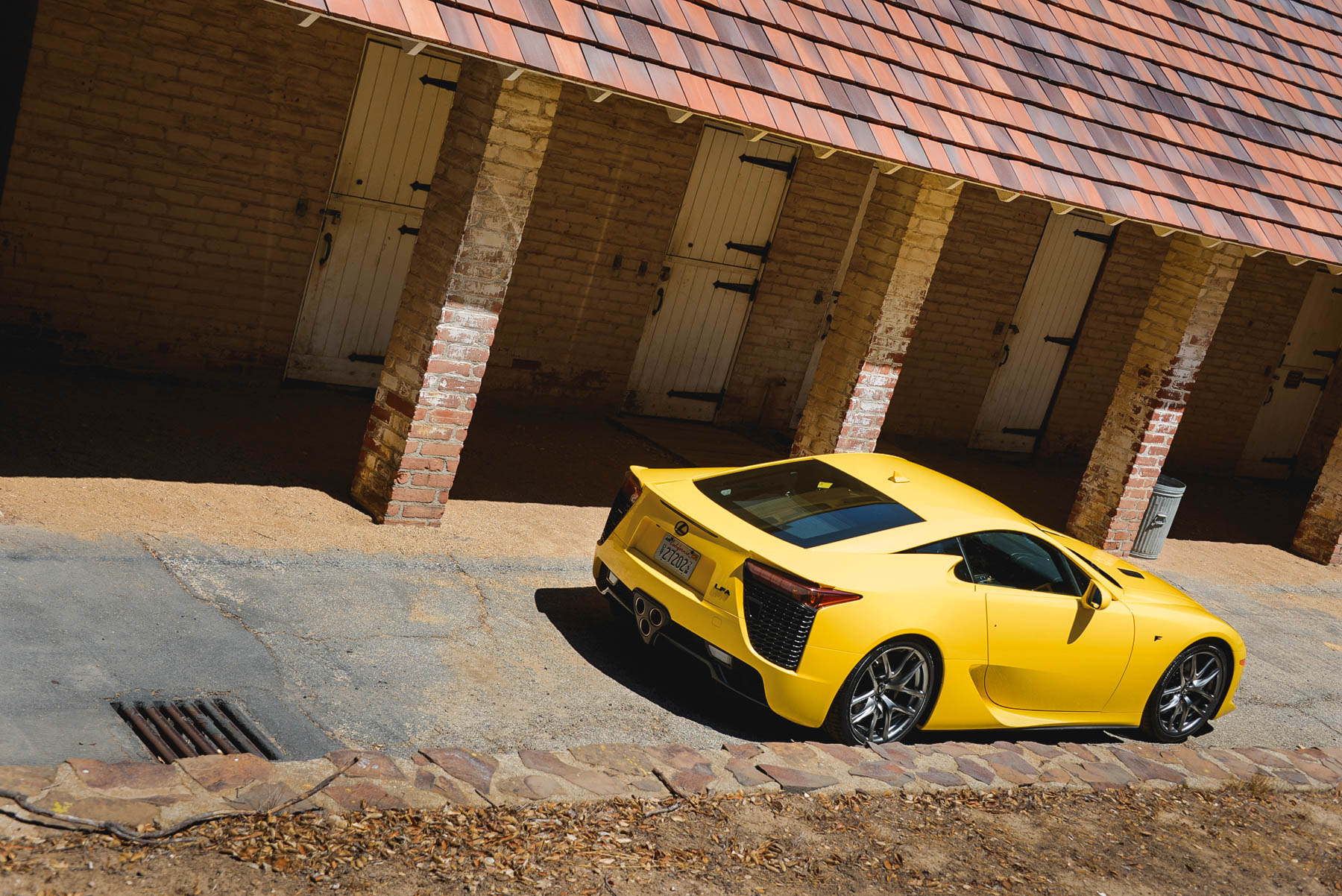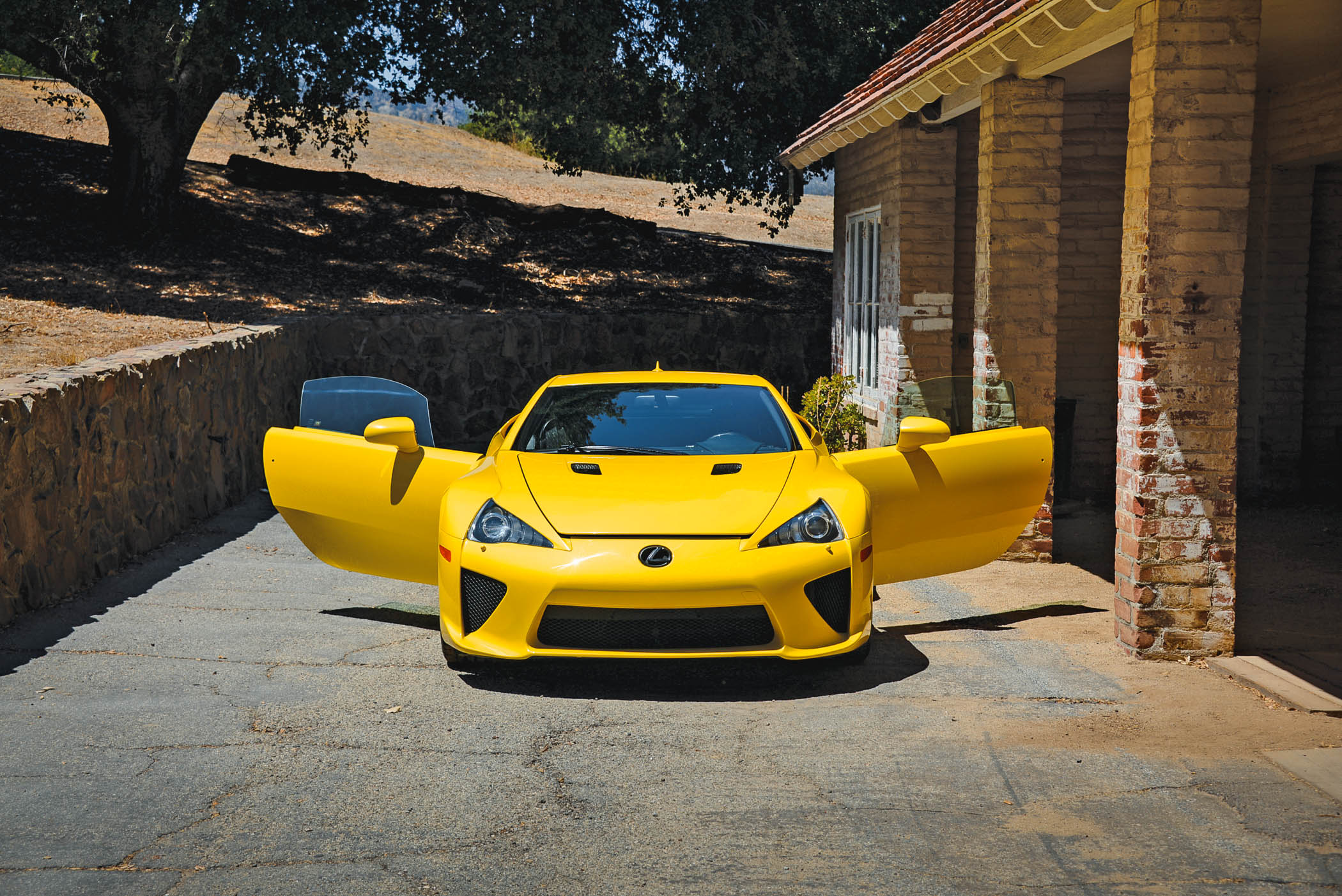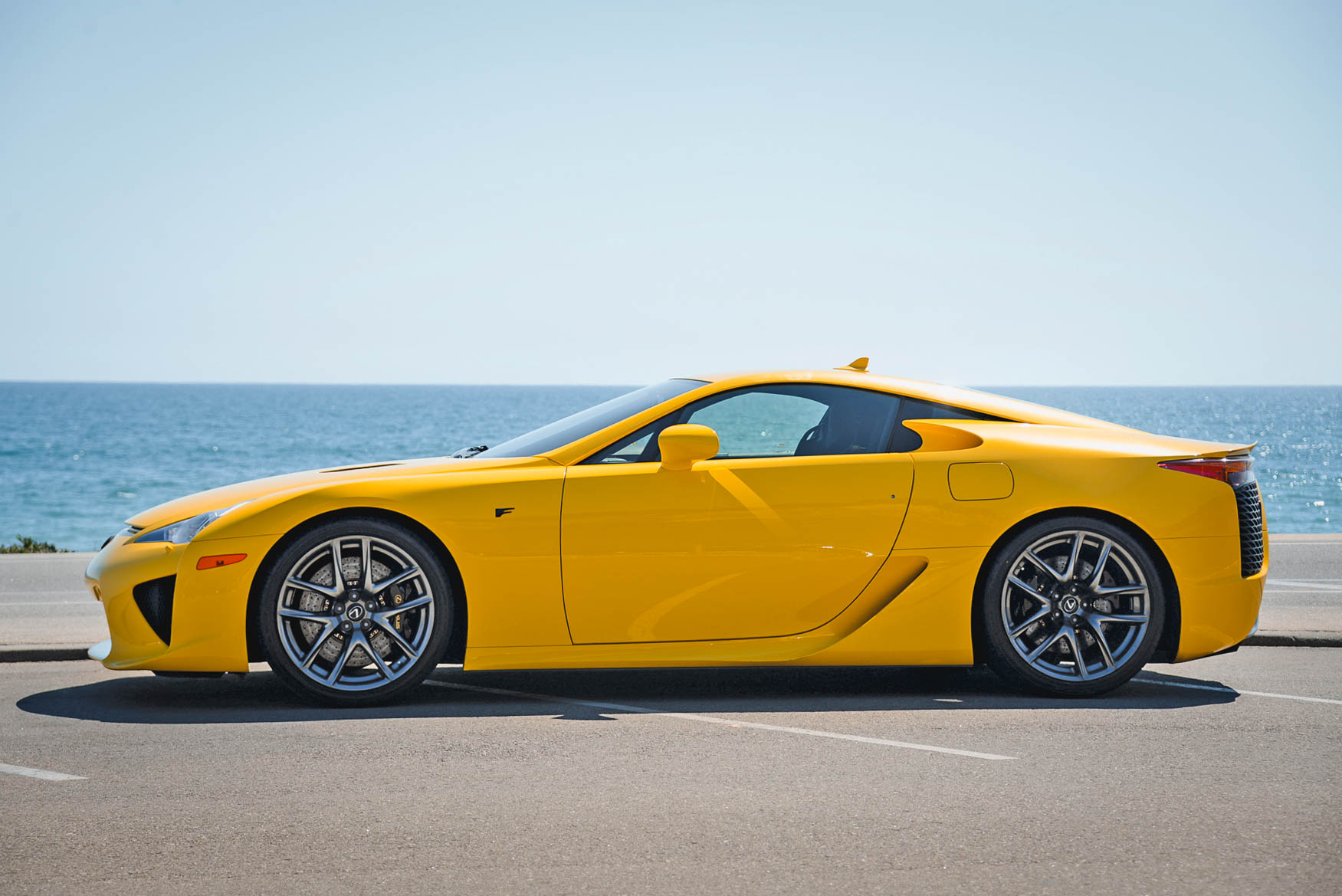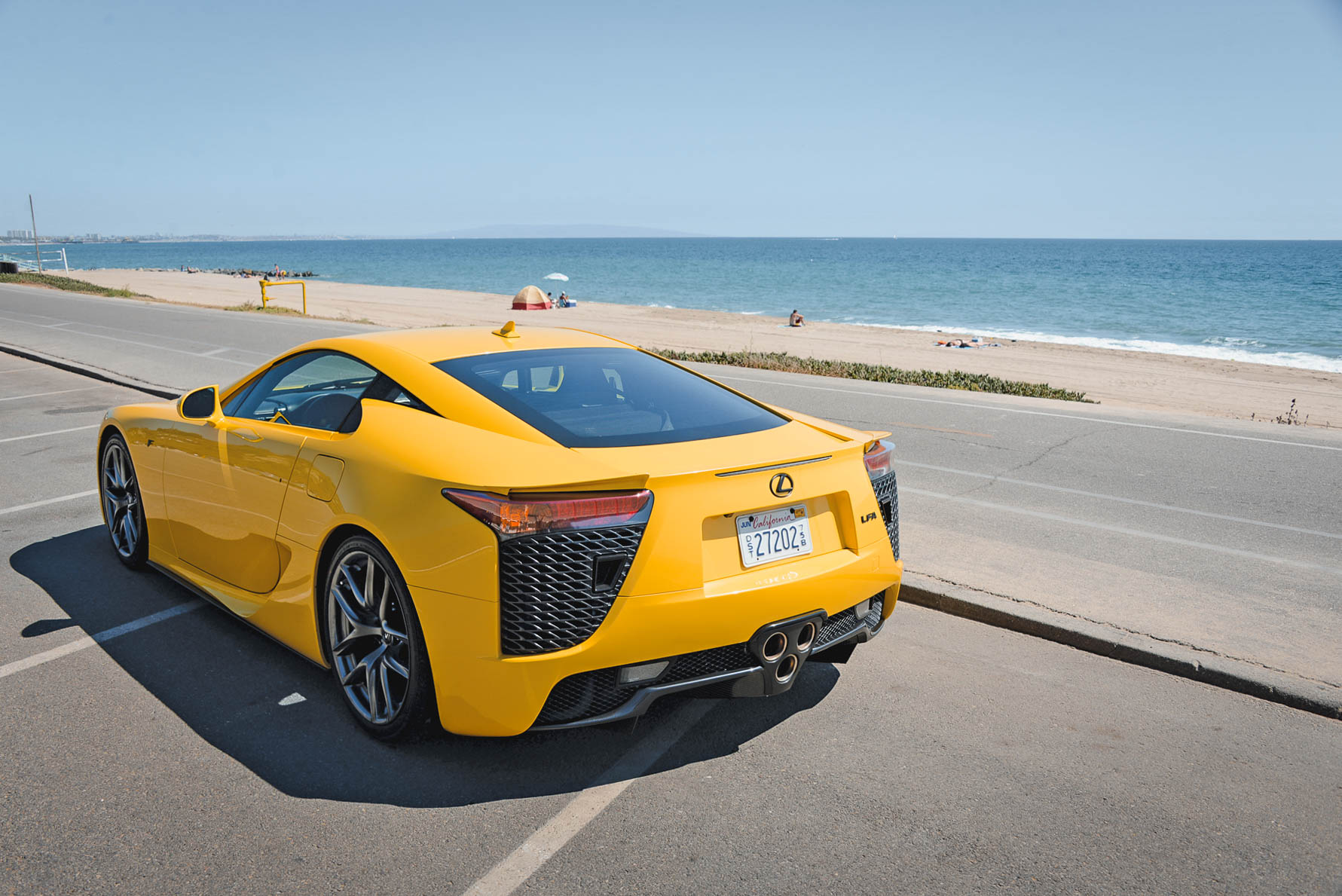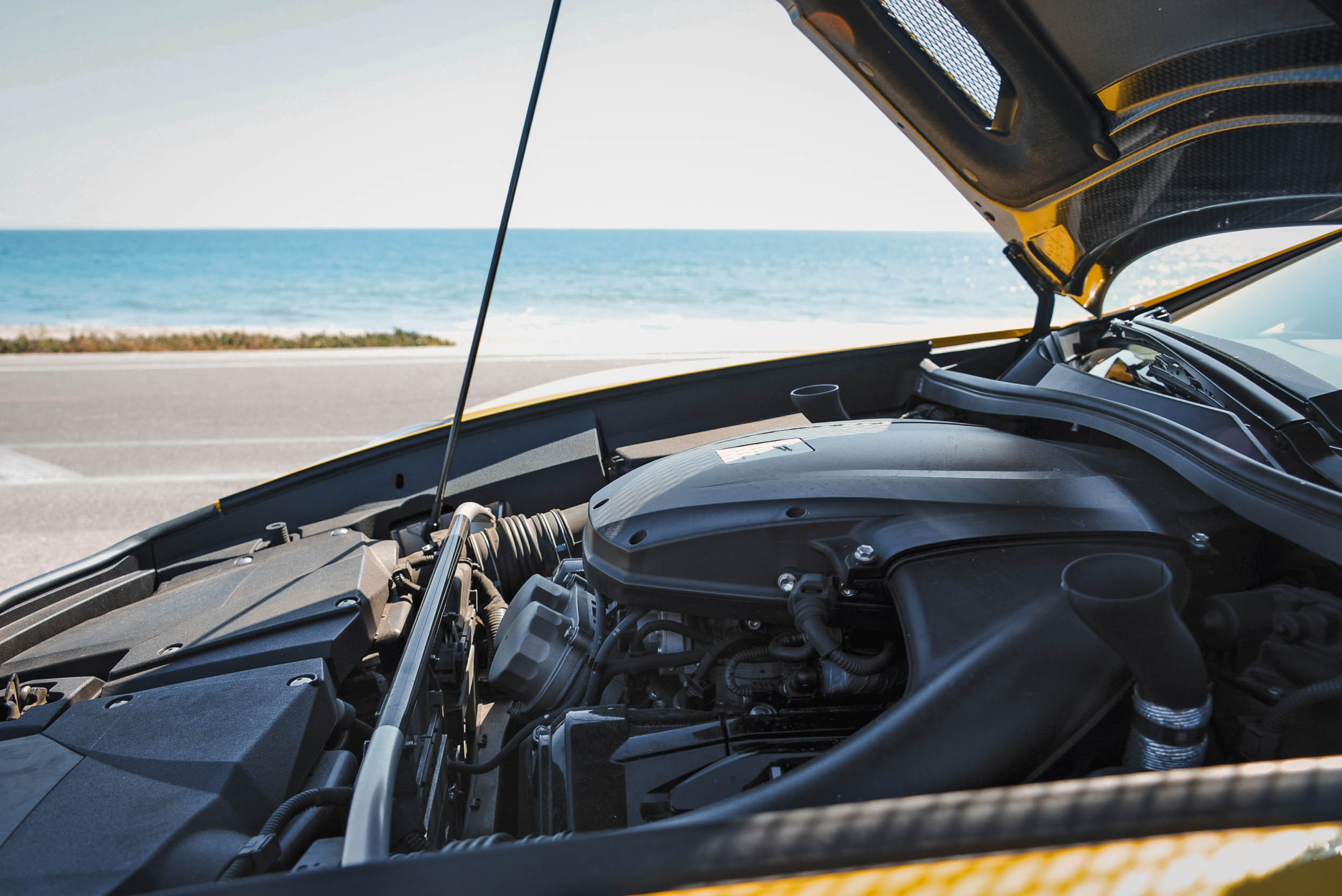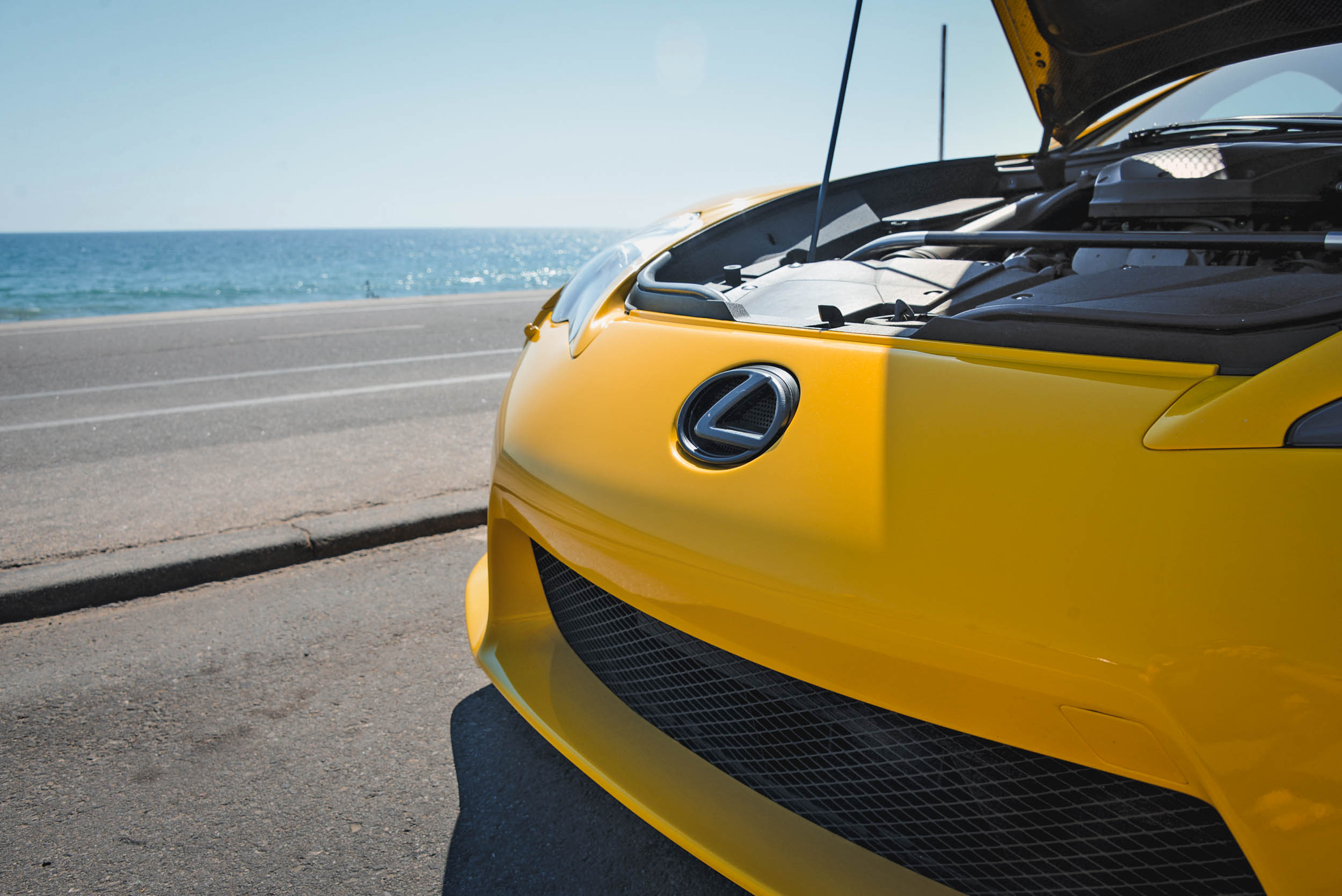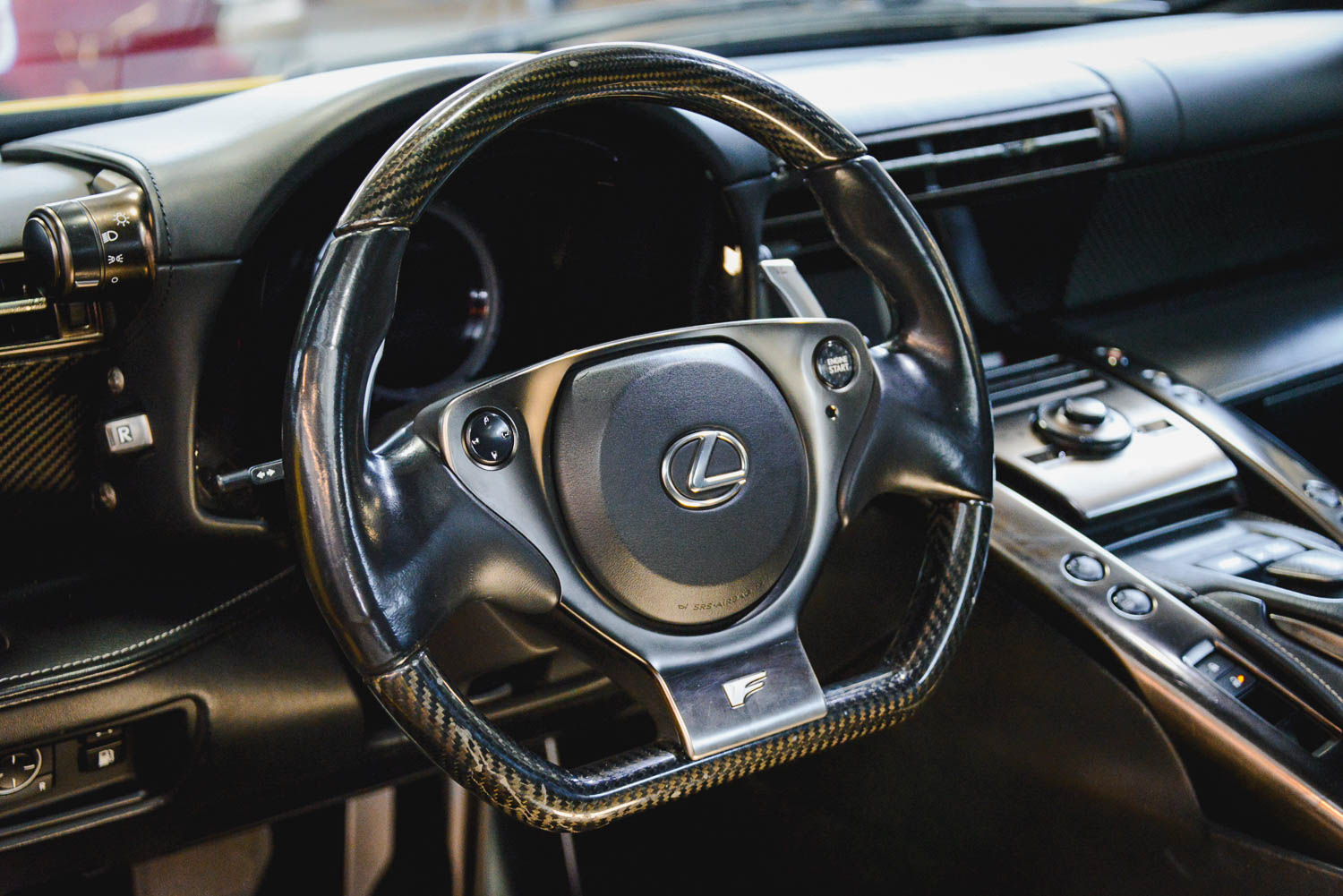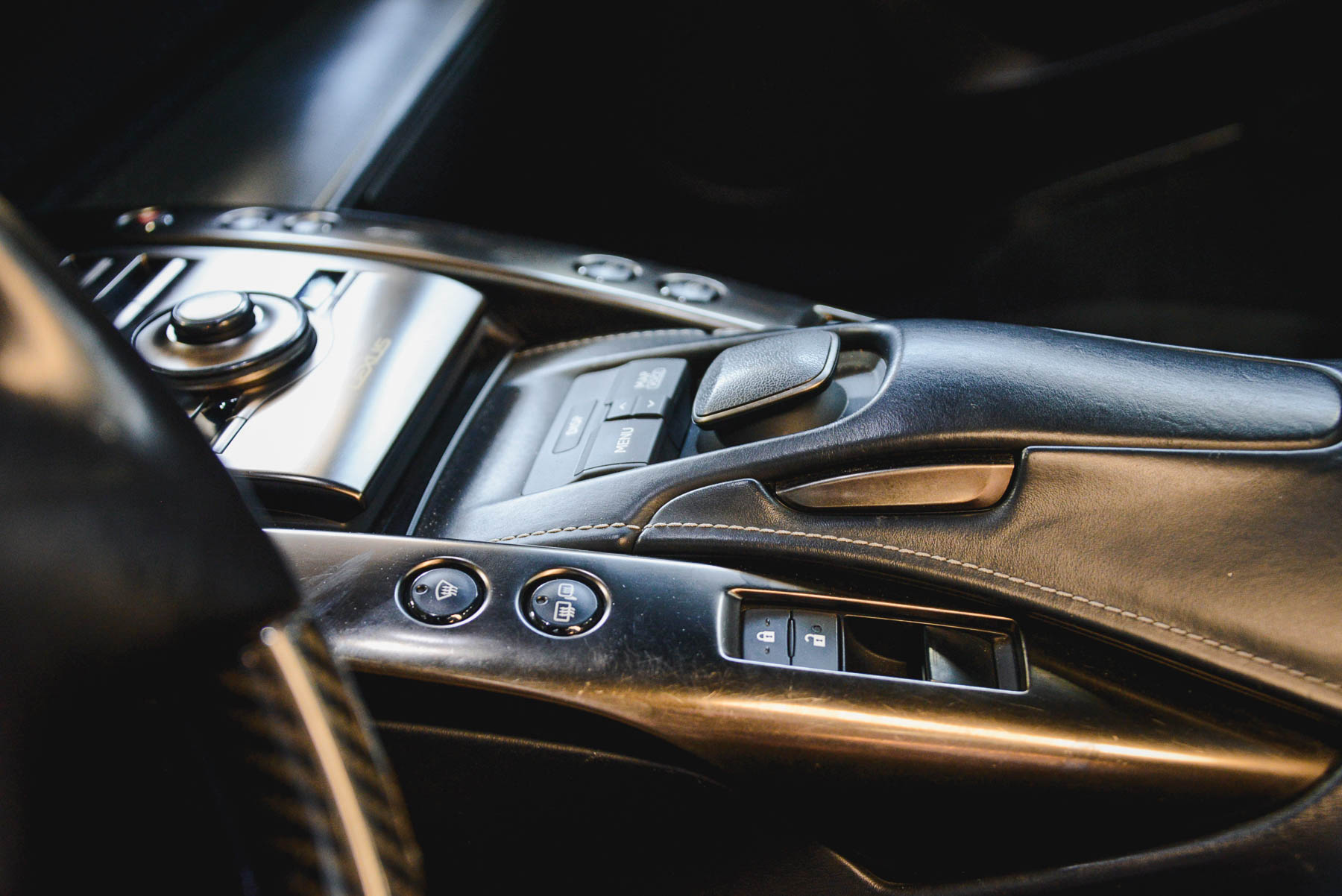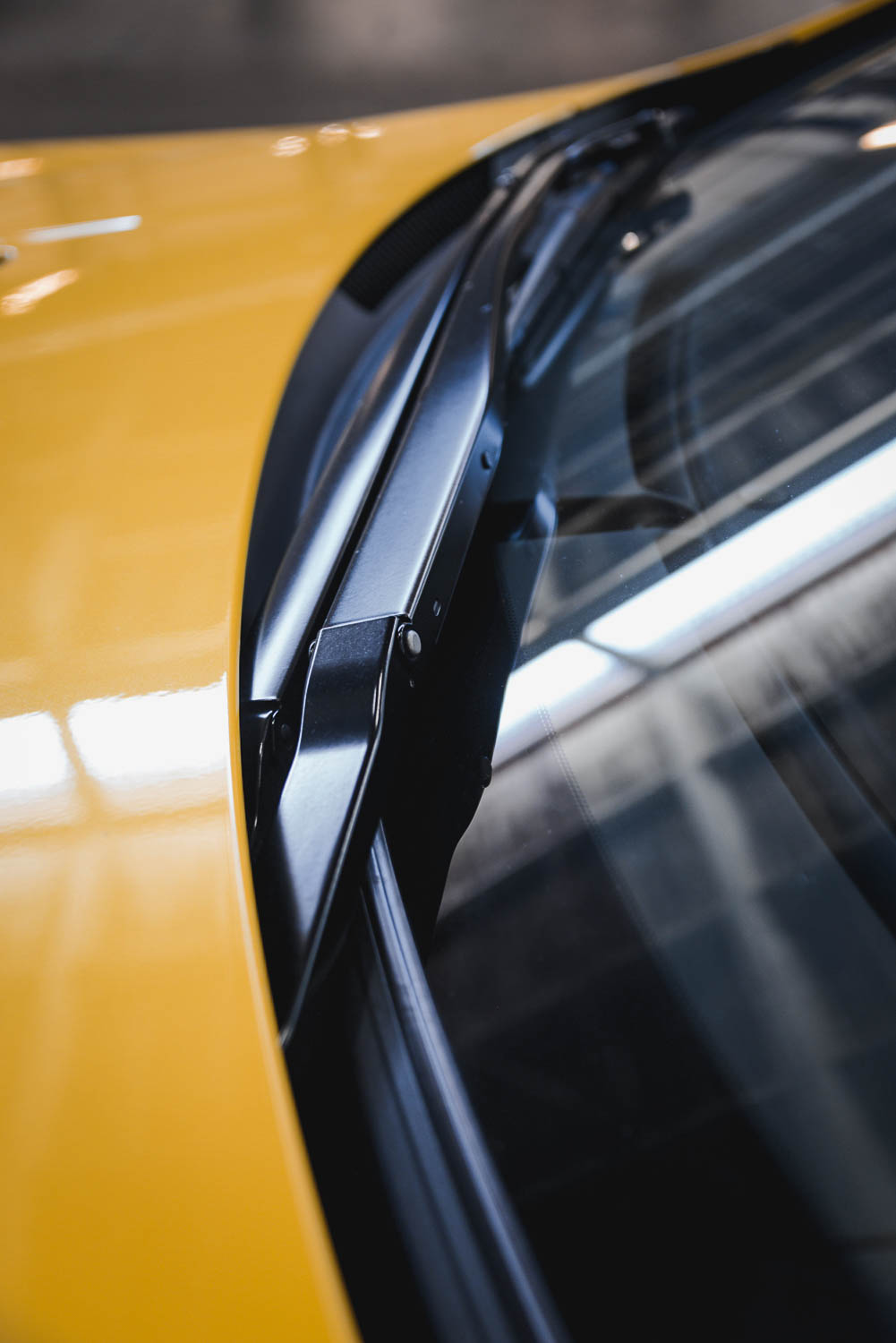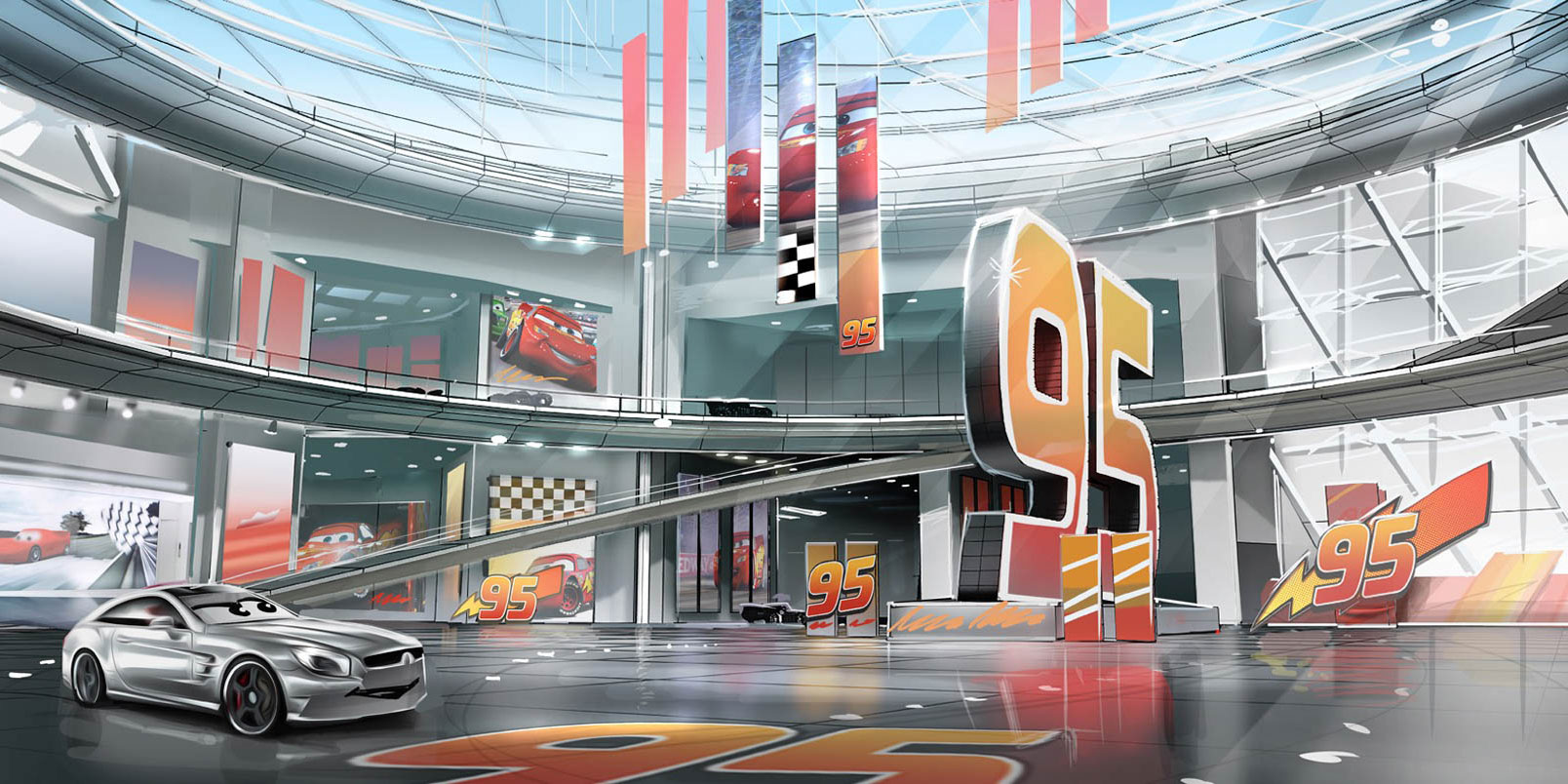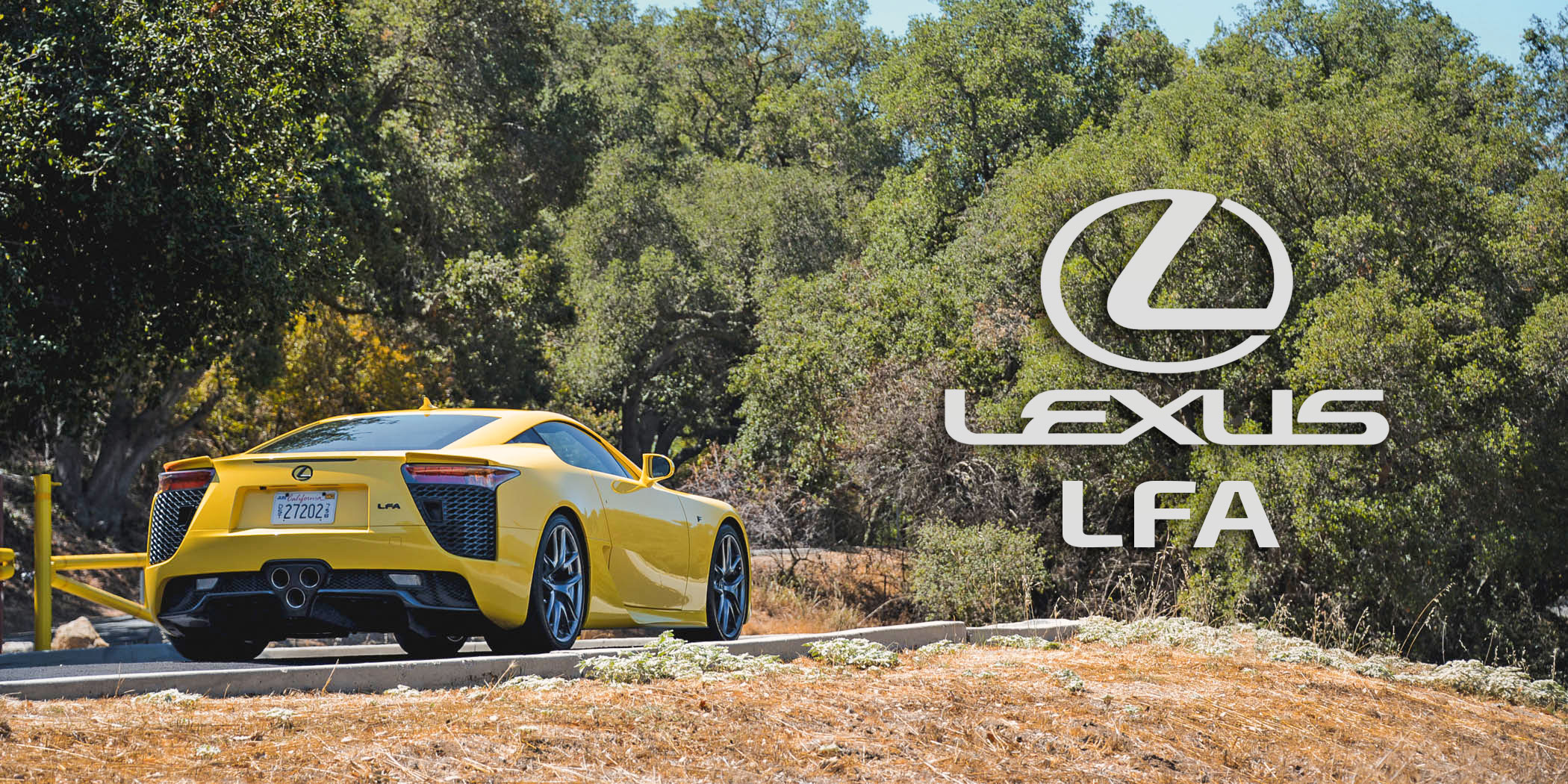
Words and Photos by Jennifer Jensen
The Lexus LFA is a car that’s not necessarily about the sum of its parts, but the parts themselves.
It’s an engineer’s fetishistic fantasy that spent more than 10 years in development, and even at $375,000 as a base MSRP, Lexus has lost money on every single one of the 500 cars produced.
Was it worth it? Let’s find out.
Lexus doesn’t have a long and storied history in the automotive world. As a luxury division of Toyota, Lexus was poised to take on the luxury car world when it launched in 1989. The brand was only in the United States until 2005 when it launched in its home market of Japan and a few other Asian markets.
In subsequent years, Lexus expanded into emerging markets such as Russia and China and is now a global car company.
During its growth, Lexus has continued to reign supreme in initial quality studies as well as long-term dependability studies.
TANAHASHI’S DREAM
So why delve into the world of supercars?
The LFA was the dream of one man in particular, Haruhiko Tanahashi, and the idea just happened to be born in a bar. In 2000, Tanahashi was having drinks with then chief vehicle engineer for Toyota Motor Company, Tetsuo Hattori, and he expressed his interest in making the ultimate sports car.
Tetsuo’s reply of “Why not?” kicked the program into gear.
Tanahashi wasted no time after receiving his boss’s approval and within a month had gathered a specialized development team. One year after that fateful drink, the team had a working prototype to begin testing. The prototype was made out of aluminum alloy, which was Tanahashi’s material of choice for his dream car.
In 2005 the LF-A concept car was shown at the North American International Auto Show in Detroit and was getting closer to production. However, the team testing at the Nurburgring was not getting the results that Tanahashi was hoping for.
HELLO, CARBON FIBER
His solution was to reduce weight and switch to carbon fiber. But the material was very expensive, and the crews at Toyota had never worked with it before.
Regardless, Toyota’s research and development chief, Kazuo Okamoto, had a discussion with Tanahashi, and the decision to switch to carbon fiber was made. The design team analyzed the entire car to capitalize on the lightweight benefits of the material. Portions of the LFA’s tub are shaped from “prepreg” manufactured from carbon fiber fabric with resin.
The seriously special part of the LFA’s tub are the roof rails which are woven on one of only two laser-monitored circular looms in the world capable of creating such a unique and specialized shape. The switch to carbon fiber saved roughly 220 pounds over the aluminum alloy and helped Tanahashi achieve his performance goals at the Nurburgring.
HEART AND SOUL
But as special as the chassis and body of the LFA are, they pale in comparison to the engine.
Tanahashi believed that to design this sports car around the driver he needed the engine to be in front. Rotational mass would suggest that for the best handling, the engine would need to be amidships, which meant having to pack a powerful V-10 behind the front axle.
This was incredibly challenging. So, the Lexus team partnered with Yamaha to help develop a naturally aspirated V-10 that was the size of a Lexus V-8 yet weighed no more than a V-6. Yamaha had helped develop the engine for the famed Toyota 2000GT, so the partnership seemed perfect.
The result most certainly is.
The LFA’s engine is the car’s true heart and soul. A 9,000 (!) rpm redline on a V-10 is borderline insane, but the sound this engine makes is — OK, I’m going to stop right here so you can watch (listen to!) the video below of the of the LFA accelerating and downshifting.
Want more? Go to YouTube yourself and find videos of owners revving their engines (they are out there). If I owned an LFA I would do the same thing.
Did you hear it? It is like an F1 car (before the 2014 switch to turbocharged V-6 engines) that has somehow grown more animalistic and beautiful at the same time. The LFA engine is both beauty and the beast. In our time with the car, we hunted tunnels just so we could hear the engine’s melodious screaming echoing off the walls.
We laughed maniacally every time we did it.
The engine is created using aluminum and 3D- modeled resin-impregnated sand molds. There are 37 castings that take one week to assemble like a jigsaw puzzle before the molten aluminum is poured in. Once the material hardens, the sand castings are hammered off to reveal the solid aluminum engine block.
TAKUMI
During the two years the LFA was produced, only 175 handpicked Toyota employees manufactured each car in the LFA Works. These artisans were known as takumi, which is Japanese for “craftsman,” a status conferred only on high-level accomplished workers.
Only four of those 175 takumi were certified to handcraft the LFA’s engine, and it takes two and a half days to build the engine once the block has been cast.
The point of all of this is the team behind the LFA was fanatical in its development; a program that ran far beyond that of a “normal” car — even by supercar standards.
With all of this attention to detail, the LFA should be perfect. But it isn’t.
FUNCTIONAL BEAUTY
Let’s start with the looks. The LFA is not a head-turner. In our time with the car, few people in jaded Los Angeles even acknowledged we were in something special.
Interestingly, if people knew what the LFA was, they went nuts for it. If they didn’t, they completely ignored us.
The shape is attractive but not beautiful in the classic sense. Like Nissan’s GT-R, the LFA is a weapon shaped by the wind, and it is incredibly effective at moving that air to the areas where it’s most needed.
Inside the cabin, the LFA is, once again, attractive, but different. The center console is dominated by the Lexus “mouse,” which takes too much time for the driver to operate while at speed. I was glad to have a passenger with me to play with the center controls, so I could focus on wringing every last ounce of power out of that engine.
IDIOSYNCROCIES
There are oddities in the cabin as well.
For example, there is a drive-mode selector on the right side of the instrument cluster. This knob allows you to choose between wet, normal and sport modes. This is OK and functions exactly as it should.
But let’s say you really like your LFA in “sport” mode (like we did). You can’t set the car to default to this mode. You will always have to switch to sport mode anytime you turn the car back on. This is somewhat maddening.
Then there is reverse.
Reverse is not found on the drive mode selector knob. In fact, it is not located anywhere near the knob. Instead, reverse is a stand-alone switch on the left side of the instrument cluster completely opposite the other drive-related knob.
It is underneath a knob that looks just like the drive selector knob but works the lights. You don’t just push the button to select reverse. To put the LFA in reverse, the driver must first pull both shifter paddles back simultaneously to select neutral, and only then can the reverse switch be engaged.
Flip this process around to get back into drive.
For a car that spent this long in development, these idiosyncrasies seem out of place.
RAZOR-SHARP THROTTLE
We headed out into heavy LA traffic, and the LFA did not blink. It didn’t smile either.
It was clear from the first mile that this car does not appreciate being driven slowly. The LFA has a six-speed, single clutch, automatic sequential gearbox, not a dual-clutch. Thus, the shifts are more akin to the feel of a true manual transmission car.
There are two shifting speeds depending on the drive mode. Shifts in “automatic” take almost a full second but in “sport” mode take as little as 0.15 neck-snapping seconds.
The throttle response is razor-sharp as only a naturally aspirated car can be. That exquisite 4.8-liter V-10 engine produces 552 horsepower at 8,700 rpm and 354 pound-feet of torque.
I have to mention the sound again. In fact, this whole article could have just been me going waaaaaaahhhhhhhhh, click, waaaahhhhhhhhhhhhhhhh. But I digress.
A FINELY TUNED INSTRUMENT
It should come as no surprise that the LFA sounds as good as it does. Yamaha crafts some very fine musical instruments in addition to their motorcycle business, and the company went to great lengths to ensure that the sounds were musical.
The surge tank (on top of the engine) was changed to amplify the engine sound so the driver can better hear the engine at work. Yamaha added internal vibrating ribs, similar to an acoustic guitar, and formed sound passages in the cabin to push the sounds to the occupants. Lower sounds enter the cabin by the driver’s feet and higher pitched sounds come out by the windshield directing the sound waves towards the driver’s head.
I envision the old Maxell cassette tape ads from the 1980s with the guy sitting in an armchair and his hair, tie, lampshade and everything else in the room being blown back by the incredible sound coming out of the speakers. This is the LFA’s engine at speed.
Running from nil to that 9,000-rpm redline takes only 0.6 seconds, which is why Lexus had to use a digital tachometer, the company claims that there was no analogue gauge that could sweep quickly enough.
There are lots of other noises that the LFA makes as well. Clanking sounds come from the drivetrain when driving slowly. The first few red lights left us wondering if we were losing parts of the car.
ROAD-OBLITERATING HANDLING
Then we found an open road and let loose. Ah, this is what the LFA was built for. As speed rises the car comes alive. The boring and lifeless steering starts communicating the intricacies of the road. The somewhat stiff suspension helps quell irregularities in the road and helps the LFA cling to the surface.
The clanking of the drivetrain disappears as the engine roar takes over the cabin and a one-mile circumference around the car. The hairs on the back of your neck, your arm and even the top of your head start to stand up.
The LFA becomes an absolutely brilliant road-obliterating machine. It pushes you to go faster, to test the limits of time and space. It is hyperactive and an outright ground-bound rocket ship.
Everything about this car comes into focus.
Who cares that the trunk is under glass and sitting between two rear-mounted radiators so your groceries will cook to well-done by the time you get home. Get this car above 80 mph, and you won’t want to go home.
You will seek out any road or track that affords you the opportunity to mash the accelerator to the floor and click off shifts as fast as your fingers can move. It won’t be fast enough. The free-revving V-10 makes damn sure of that.
As speeds rise, grip increases exponentially. Above 50 mph the wing rises out of the back — it’s fun to watch in the rearview mirror — and it really aids in downforce. The LFA just sticks to the road.
THE THRILLS
As the LFA is so carbon-ridden, the brakes, supplied by Brembo, followed suit. The carbon-ceramic discs are clamped by six-piston calipers in the front and four-piston calipers in the rear.
A light brush of the pedal scrubs off speed at an alarming rate. Mashing the brake pedal separates your head from your body.
Visibility is good all around, and the LFA is easy to place on the apex as you carve any given canyon road.
There is another button on the left-hand side of the dash to defeat stability control. Pushing that button brings another level of excitement to the LFA. You can guide the car with the throttle and light inputs from the helm.
Heavy on power, and the tail will come out, but it is very clear when this will happen, which translates into controllable drifts. Doing this at 4,000 rpm means you have another 5,000 rpm in which to play with the tail.
It is simply thrilling in a way that only a front-engine, rear-wheel-drive car can be.
A COMFORTABLE PLACE TO BE
All too soon we run out of empty roads and start navigating back through traffic. The LFA returns to its slightly un-Lexus-like qualities, but I have a new appreciation for the beast and am much more forgiving of the excess clatter.
The ride through town is firm, but not uncomfortably so. The stereo sounds nice, and the cabin remains a serene and comfortable 70 degrees while the LA traffic inches along.
There is a little button that allows you to move the tachometer to the right revealing a wealth of data and information in the instrument panel. Bumper-to-bumper traffic affords the opportunity to explore the myriad data available, which is pretty much anything you can imagine that a car can monitor.
The seats are comfortable, the steering wheel feels good in my hands, and it really is a nice place to be.
SO, WAS IT WORTH IT?
So, coming back to the question posed at the beginning of this article, was it worth it for Lexus to invest all of the time, money and resources they did to produce the LFA?
Well, the LFA has done one thing for the Lexus brand: It has redefined what Lexus means to the automotive enthusiast. It has opened the door to extend the traditional Lexus values of quality, reliability and comfort to performance.
It has allowed Lexus to release cars like the RC F and the GS F that will push Lexus performance into the mainstream. The RC F is a true contender for the likes of BMW’s M division and the monsters coming out of Mercedes’ AMG department.
In those terms, the LFA has done exactly what a flagship model is supposed to do, and that makes it one of the best investments the company could have ever made.
Originally published in 2015
